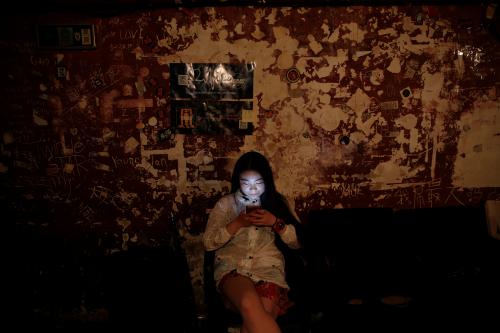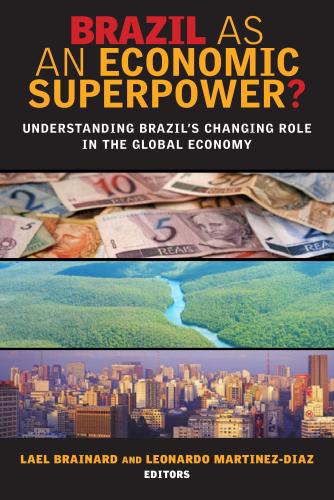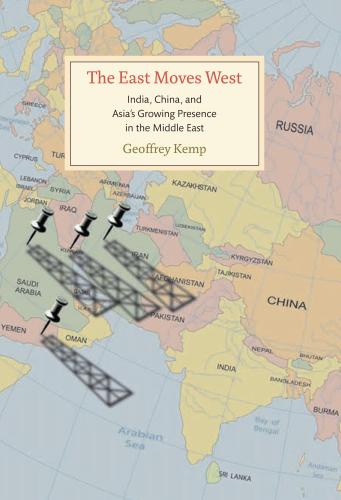Listen to BPEA Co-editor Justin Wolfers discuss this paper:
Women worldwide have less ability to broadly access the financial system than men, with 47 percent of women owning a bank account compared to 55 percent of men, according to a new paper presented today at the Spring 2013 Conference on the Brookings Papers on Economic Activity (BPEA) that is among the first to measure women’s economic empowerment.
Although account ownership is nearly universal in high-income countries, the gap is high in developing countries, with 37 percent of women being banked versus 46 percent of men. Comparing geographic regions, the gender gap is largest in South Asia where 41 percent of men report having an account compared to only 25 percent of men.
Even after controlling for income and education, women in developing economies are still more excluded from the financial sector than men, the paper finds: for example, women living below US $2 per day are 28 percent less likely than men at the same income level to have an account. Overall, in the developing world, there is still a persistent 6 to 9 percentage point gap in account penetration, across even among the 20 richest percent of income earners.
The paper, “Measuring Financial Inclusion: The Global Findex Database,” authored by Asli Demirguc-Kunt and Leora Klapper of the World Bank, develops a new set of indicators that measure how adults in 148 economies save, borrow, make payments, and manage risk. Their analysis is based on survey data from interviews with more than 150,000 nationally representative and randomly selected adults age 15 and above during 2011.
The authors also found a gender gap in savings and credit behavior in developing economies: 29 percent of women reported to have saved in the past 12 months compared to 33 percent of men. In Kenya, for instance, 28 percent of men report having saved formally while only 19 percent of women did so. Similarly, only 32 percent of women report having credit in developing countries while 37 percent of men have credit.
Looking at all low-income earners in the developed world, they found striking differences: in the US, over one-quarter the poorest quintile has no access to a formal financial institution compared to 9 percent in Canada, and 3 percent each in the UK and Australia.
Overall, the authors found that more than 2.5 billion adults do not have formal financial accounts, with 89 percent of adults in the developed world having accounts compared to 41 percent in developing economies. Overall, half of adults around the world remain unbanked due to high cost, physical distance, and lack of proper documentation.
Over one-third of the unbanked could be included in the financial system through changes in policy, they note, such as increasing the use of technology to reduce physical barriers, reducing withdrawal charges, and relaxing documentation requirements, they find. Specifically, to overcome the distance barrier, use of technology such as mobile banking and other innovations could potentially increase the share of adults using a formal account by up to 23 percentage points in Sub-Saharan Africa and 14 percentage points in South Asia. Relaxing documentation requirements in Sub-Saharan Africa could also potentially increase the share of adults with an account by up to 23 percentage points. On affordability — particularly important in Latin America and the Caribbean where 40 percent of non-account-holders report that formal accounts are too expensive — reducing withdrawal charges and balance fees could make formal accounts more attractive to more than 500 million adults who are without one. One example the authors cite is in Sierra Leone, where maintaining a checking account costs 27 percent of GDP per capita in annual fees.
In addition, lack of trust in the financial system is a difficult barrier to overcome. “This distrust can stem from cultural norms, discrimination against certain population groups, past episodes of government expropriation of banks, or economic crises and uncertainty,” they write. The distrust is particularly high in Europe and Central Asia, where 31 percent of non-account-holders cite lack of trust in banks as a reason for not having an account—a share almost three times that in other regions on average.
Other findings include:
• 9 percent of adults report having originated a new loan from a formal financial institution in the past 12 months—14 percent of adults in high-income economies and 8 percent in developing economies.
• About half of adults in high-income economies report having a credit card, whereas in developing economies only 7 percent report having one.
• 7 percent of adults around the world have an outstanding mortgage, reaching 24 percent in high-income economies.
• About 11 percent of adults in developing economies report having an outstanding loan for emergency or health purposes.
• Account penetration varies, with 89 percent of those in high-income economies having an account compared to 55 percent in East Asia to 18 percent in the Middle East.
“Well-functioning financial systems serve a vital purpose, offering savings, payment, credit, and risk management products to people with a range of needs. Inclusive financial systems—allowing broad access to appropriate financial services—are especially likely to benefit poor people and other disadvantaged groups. Without inclusive financial systems, people must rely on their own limited savings to invest in their education or become entrepreneurs—and small enterprises on their limited earnings to take advantage of promising growth opportunities. This can contribute to persistent income inequality and slower economic growth,” they write.
The Brookings Institution is committed to quality, independence, and impact.
We are supported by a diverse array of funders. In line with our values and policies, each Brookings publication represents the sole views of its author(s).









